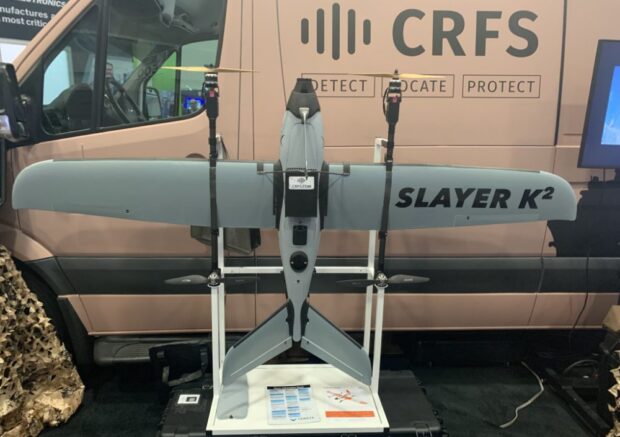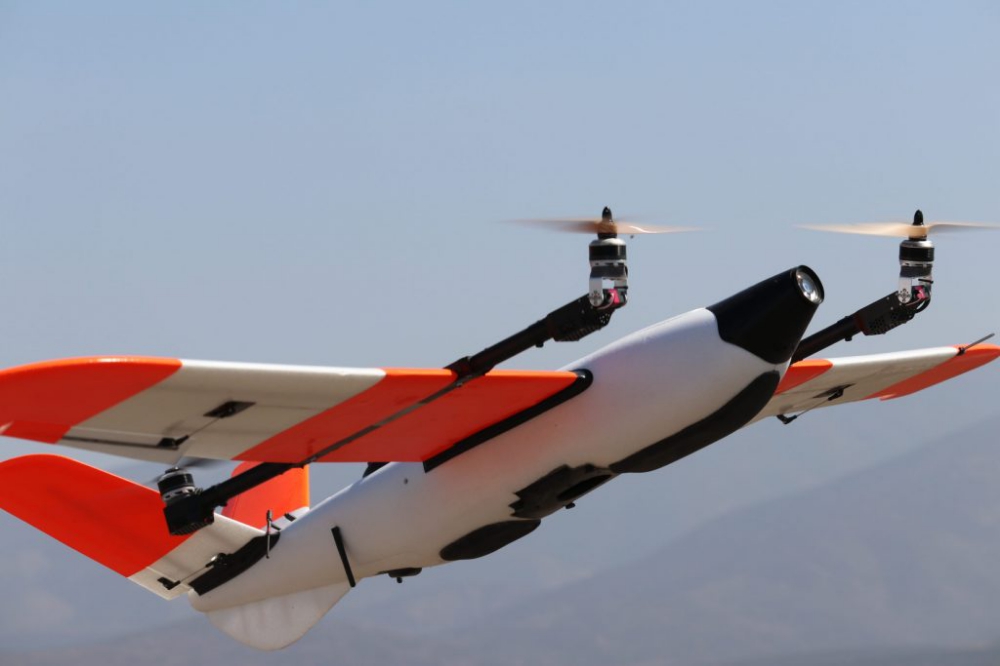debuted the Slayer Kinetic Killer at the 59th Annual Association of Old Crows International Symposium and Convention. Slayer K2 was one of many Counter-Unmanned Aerial Systems (C-UAS) systems at AOC.
However, what sets Slayer K2 apart is its unique approach to C-UAS the system takes. Overt Defense was able to speak with Censys Technologies Vice President of Quality and Safety Duke Samouce on the company’s new C-UAS system.
Slayer K2 is a C-UAS development based on Censys Technologies’ existing Sentaero BVLOS. The company’s civilian UAS becomes a loitering C-UAS drone, with the system intercepting threats by crashing into them. Duke touched on the origins of the concept.
“Censys Technologies has been in business for about five years now. In the past two years, we’ve developed what’s called Sentaero Beyond Visual Line of Sight (BVLOS). We use it a lot for utilities, long linear inspections of power lines, gas, oil, agriculture, mapping and search and rescue. We’ve have 12 different payloads that you can go into the aircraft and are swappable in the field, and one of them is a gimbal that has infrared and day optics. It can zoom in both EO and IR. So from those capabilities I’ve developed an aircraft pointing towards DoD (Department of Defense).”
Censys Technologies aims to use Sentaero BLVLOS’ State-of-the-Art Detect-and-Avoid System, which allows the drone to automatically avoid other aircraft, to detect and track UAS threats.
“We look for what the threat drones’ signature be it optical or IR. Once it picks it up, it’s actually very simple. It keeps it in the middle of the field of view (referring to the Slayer K2’s sensor) and keeps it in the middle or the FOV until it’s impacted. If it moves out of the center of FOV, SK2 just maneuvers to return it to the center.”
If Slayer K2 fails to intercept the first time, the drone can attempt to intercept the threat again.
“We may not get it the first time. I would like to think our percent kill would be 100% the first time but we’ll just retarget until we get it.”
Once detected and tracked, Slayer K2 will intercept by physically ramming the threat. Modifications to the Sentaero BVLOS for this mission include reinforcements to the airframe and a mounted blade.
“This is a counter UAS capability, reinforced leading edges, and vertical strike device. This aircraft with no explosives, flying at 50 knots and weighing 22 pounds has the kinetic energy of a 2245-pound impact. So we can take out very large drones.”
If the threat was intercepted and there were remaining Slayer K2s, the drones could be recovered for future use.
“SK2 can return to launch. If you launch more than one, and the first one takes the threat out with no more threats remaining, we’re not going to sacrifice the second SK2. You can give it a signal to come back and it’ll go back into its vertical rest and land. And that’s what these [Sentaero BVLOS] do. If you lose signal, they come back and land by themselves. If you get low on battery, they come back and land by themselves. It’s all very much autonomous.”
Duke noted the application of what Censys’ Slayer K2 would have, highlighting its role in a layered C-UAS network as the system could deal with UAS threats that other C-UAS defenses would struggle with.
“Counter UAS has to be a layered defense because you’ve have other capabilities here that might shoot nets, quadcopters might fly up and hit it, behind me they have an RF (radio frequency) transmitter that knocks them out. If the threat has RF for guidance. If the threat UAS is just using GPS for guidance RF jamming is not going to stop them. Unless you actually hit it, it’s not going to stop that drone. If it’s going to a grid point with 20 pounds of explosive on it, it’s going to get there. But a kinetic killer can take it out.”



